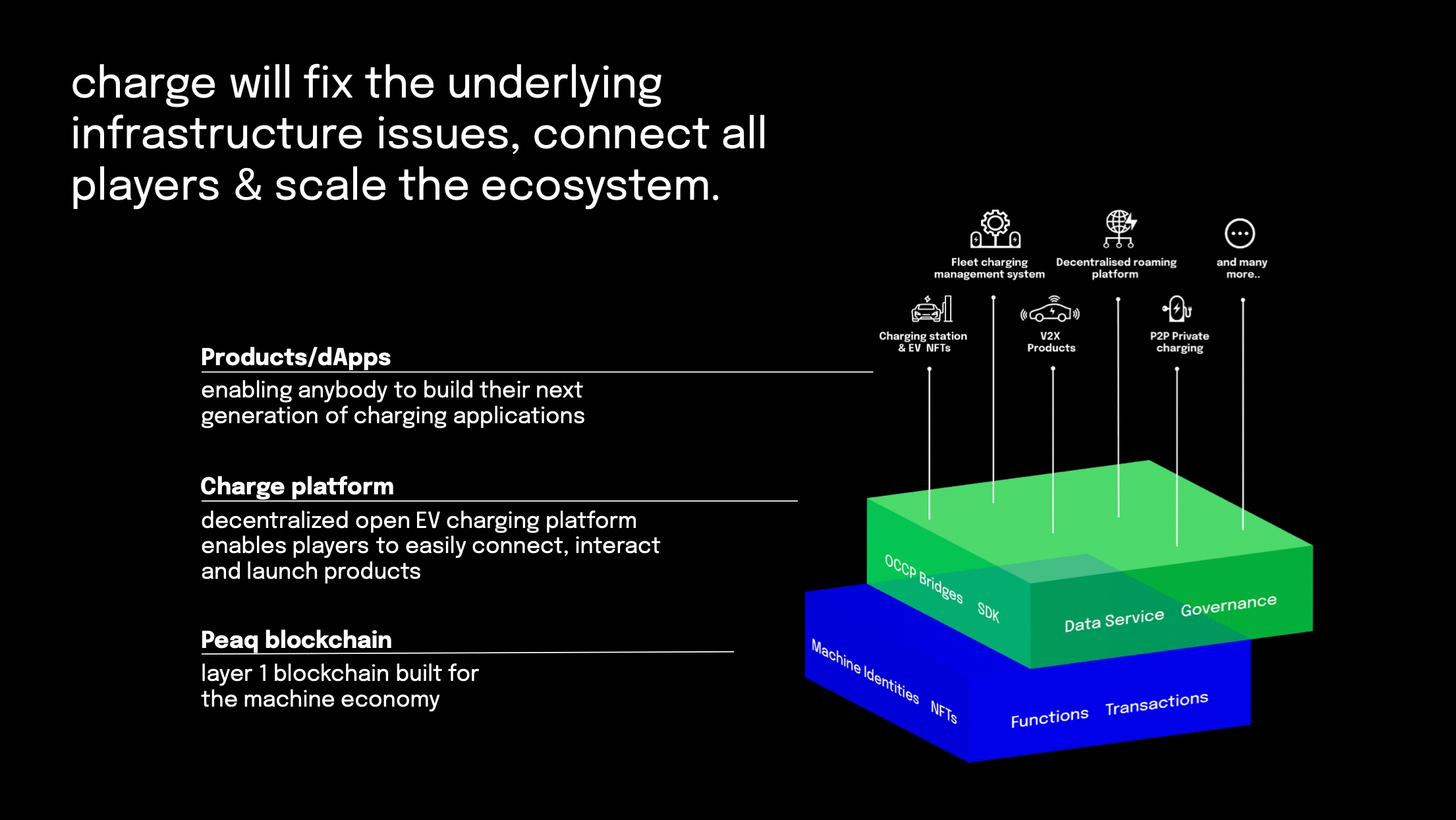Tech Stack
The Charge tech stack consists of a platform layer and enables application and tools layers. see overview below:
As more products are built on the platform, more revenue is generated, a stronger community is built, attracting more partners onto the platform.
Charge provides a neutral backbone for authentication and payment between charging stations and EVs to enable the trade of energy for e-mobility in a peer-to-peer manner. Charge leverages Self-Sovereign Machine Identities (SSMIs) for peer-to-peer identification and authentication, and digital currency for peer-to-peer payments and settlement. All business logic is executed in a decentralized and fully automated manner using smart contracts. Charge uses democratic voting mechanisms for decentralized governance.
Charge enables individuals and organizations to register charging stations and EVs on a permissionless platform using Self-Sovereign Machine Identities (SSMIs), and equip them with a payment method. Every charging station, EV and user existing on the platform can identify and access charging stations with a single account and payment method. Authentication and payment for a charging session takes place instantly and in a peer-to-peer manner. By providing an open, neutral register for all charging ecosystem participants, Charge is solving the issues of charging infrastructure fragmentation and other problems mentioned earlier.
Since these SSMIs are on-chain, there is no necessity for authentication of certificates that are error prone and cause massive delays in the system, a process that is resulting in loss of resources currently. As they are on-chain and operate through smart contracts, the processes are fully automated and instantaneous with much higher accuracy. Settlement times reduce from up to 4 weeks to 1 second. Overall costs of the ecosystem reconciliation costs reduce by 40%.
As the core infrastructure is provided by Charge, builders can easily build other dApps on the application layer by using the standard toolkits and benefit from the ecosystem. With the provided infrastructure, a suite of applications can be built on the platform. For instance, an entrepreneur in Sweden can build a Fleet charging management system on the chargers onboarded in Germany onto the platform in a permissionless way. Through such an application, both the entrepreneur and the charge point owners can benefit commercially while increasing the utilization of the chargers.
Last updated
